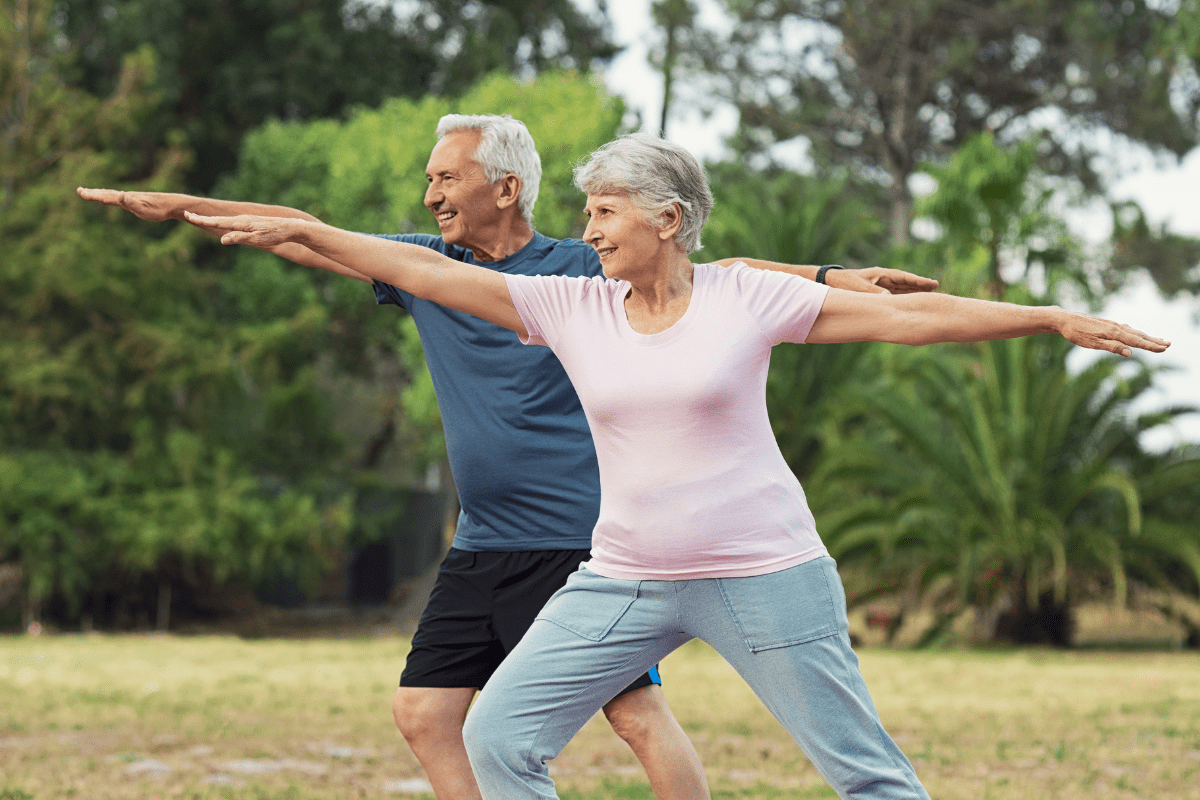
As a 61-year-old life long female trainer and body builder, I’m here to tell you that training older adults is a gold mine but takes some different skills.
While training older adults can be a rewarding experience for coaches and fitness professionals, it requires a different approach than training younger clients. As we age, our bodies change, and certain exercises or workouts that once worked for us may no longer be appropriate. Older adults tend to have unique fitness goals and limitations that need to be considered in training plans. In this blog, we will explore 10 secrets to successful training for older adults over the age of 50, intended for coaches looking to expand their expertise and offer tailored support to their clients.
1. Mindset Matters
The first secret to successful training for older adults is the recognition that mindset matters. Many older adults may feel discouraged by age, illness, and physical limitations. As a coach, it’s important to create an uplifting and supportive environment that emphasizes the benefits of exercise and encourages a positive mindset. Start by setting realistic goals and ensuring your clients feel comfortable with the exercises by using encouraging words to make them feel successful. Soon, they will feel more confident and empowered to push themselves to the next level.
2. Know Your Client
Older adults deserve the same level of personalized attention that we give to younger clients. Coaches who specialize in training older adults should take the time to learn about their clients’ medical history, fitness goals, and limitations. Understanding who your client is will ensure that their workouts are appropriate for their needs and capabilities. Take a holistic approach to their wellbeing and consider their lifestyle habits, emotional wellbeing, and nutritional habits.
3. Safety First
Older adults may require special considerations when it comes to exercise safety. Many have health issues, joint pain, physical limitations, or balance issues, meaning they may have a higher risk of injury. Coaches should prioritize safety during workouts and tailor routines to suit individual needs. Always start with a warm-up that prepares the body and stretching exercises that stabilizes the joints before jumping into any intense workout routines.
4. Variety is The Spice of Life
Variety is essential in keeping the training sessions exciting for your clients. The variety is not only necessary for fitness but also to keep the interest of the person. Keep things fresh by mixing up workouts, challenging your clients with new exercises and routines that could help to build their endurance. Steer clear of routine patterns and make sure your workouts are balanced and cater to all the aspects of fitness.
5. Consistency is Key
When it comes to successful training for older adults, consistency is key. A consistent workout routine can help slow down the aging process, improve mobility, and reduce the risk of injury. Consistency also helps build trust between you and your clients. Make sure you establish a consistent schedule and stick to it. Work with your clients to find a routine that they can realistically adhere to and achieve optimal results.
6. Equipment Accessibility
Older adults often find working out to be challenging due to accessibility issues and lack of knowledge on how to use the machines. Work with your clients to find equipment that will help them meet their fitness goals. Explain to them how each piece of equipment work and how it benefits their training. Consider investing in resistance bands and small weights as these don’t occupy space and are straightforward to use.
7. Sleep and Rest
Recovery time is essential for your clients to grow, build strength, and maintain healthy joints. Older adults should receive adequate rest and sleep for their bodies to heal. Implement timers throughout the sessions to dictate rest periods or allow for a short break to catch their breath. Ensure that the cooldown periods are followed to help their bodies recover and repair quickly.
8. Nutrition
Nutrition is also an important aspect of successful training for older adults. Encourage your clients to eat whole foods, incorporating protein and calcium-rich foods into their diets. Supplements may also help fill in any necessary nutrient gaps. Complete a dietary assessment and use it to guide recommendations tailored to suit individual needs.
9. Cardiovascular exercise
A significant aspect of training older adults is cardiovascular health. Cardiovascular exercise is the most effective way to help clients shed excess weight, develop endurance, and improve their general wellbeing. Include exercises that cater to their needs; for example, walking, cycling, or swimming.
10. Celebrate Wins
Finally, celebrate your client’s success and wins along the way. Celebrating wins and milestones can help boost confidence and create a positive mindset. Share information about their progress, any new skills they’ve learned and how these changes have affected their life, for example, improved balance and improved walking distance
Finally, the biggest piece of feedback I receive from my clients regarding young trainers is they treat them the same way as they do folks in their 20s and 30s. That leaves them sore, and so times injured. Please understand that as we age we become more inflamed. This makes recovery far more difficult. Further, impaired digestion due to decreased digestive enzymes due to aging can also mean low protein, high carb, making muscle building and recovery more difficult.
Training older adults is a rewarding experience for both coaches and clients. As a coach, you have a duty to cater to individual needs and provide personalized attention to help your client achieve their fitness goals. Remember that mindset matters, safety is essential, variety is the spice of life, and consistency is key. Incorporate low-impact exercises that cater to their limitation benefits to improve cardiovascular fitness, engage in group settings to promote a sense of community and celebrate wins. Use the ten tips outlined in this blog to help make a meaningful difference in the lives of older clients.



